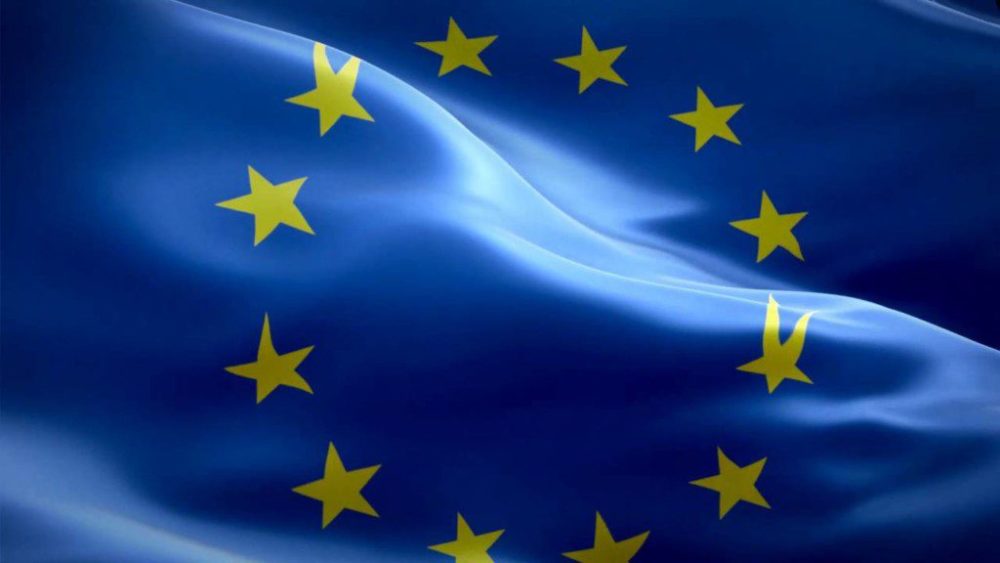GEN – 1454.00. In cooperation with Orgalim, the Eurovent Team provides you with an overview on all European legislative developments of relevance to the HVACR sector. The Bulletin provides a compendium allowing the industry to assess the status quo.
Highlights
F-Gas
Negotiations in the European Parliament and the EU Council are ongoing on the proposal for a revision of the F-gas Regulation.
As a consequence of the number of amendments tabled in the European Parliament Environment Committee (ENVI) and the pace of negotiations, the legislative process for the proposal is delayed. The vote in the Committee for Industry, Transport, Research and Energy (ITRE), initially planned for 5 December, will take place on 23 January, whereas the ENVI Committee vote is postponed to 1 March and the plenary vote to April 2023 (at the earliest).
The EU Council published a note on the progress made following the eight meetings of the Working Party on the Environment which were dedicated to the F-Gas proposal under the Czech Presidency. Many Member States expressed support for the idea of extending the subject matter of the Regulation to include natural refrigerants, since they are the main alternative substances, and their safe and efficient use needs to be ensured.
The discussion showed that, while the proposed timeline for the phase-down of hydrofluorocarbons (HFCs) is considered too ambitious by several Member States, a larger group of Member States is against lowering the overall level of ambition of the European Commissionâs proposal. Further discussion will be necessary on other key elements of the proposal, such as the timeline for restrictions on placing certain products on the market and equipment and the introduction and level of a price for quotas for HFCs.
Discussions on the proposal, which was on the agenda of the Environment Council on 20 December, will continue under the Swedish Presidency which started in January 2023.
Construction Products Regulation (CPR)
The draft report of the European Parliament IMCO Rapporteur, Christian Doleschal (EPP, Germany) on the CPR proposal was published on 14 November 2022. The Rapporteur proposed amendments aiming to reduce administrative burdens and delete provisions that presented a real risk of regulatory overreach. He also stated that the revised CPR should continue to apply to the sale of construction products but not to service contracts with contractors. Furthermore, he made suggestions to reduce the current backlog of standards, such as streamlining the standardisation procedure by introducing clear response deadlines and better communication methods between the Commission and CEN/CENELEC. The Rapporteur was not in favour of bypassing the standardisation process via the adoption of delegated acts, as it would cause severe delays in the creation and adoption of new harmonised technical specifications. Finally, he pointed out the need for a clear division between the competences of the EU and of the Member States, a shorter transition period, an increased use of digitalisation and a clear definition of the database for construction products.
During an exchange of views in the Internal Market and Consumer Protection (IMCO) Committee on 29 November, MEPs also agreed with the need for a shorter transition period and stated that delegated acts from the Commission should be set out under exceptional circumstances only. They highlighted the role of public procurement and underlined the need to reduce burdens for SMEs.
Following this meeting, the IMCO amendments were issued on 20 December. The other two opinion committees (Environment, Public Health and Food Safety (ENVI) and Industry, Research and Energy (ITRE) also proposed amendments which were published on 12 December (ITRE) and 3 November (ENVI).
In terms of next steps in the Parliament, the consideration of amendments is foreseen to take place in an IMCO meeting in January 2023, after which compromise amendments will be prepared in February. The IMCO vote is scheduled for 27 March.
The votes in the ENVI and ITRE committees are scheduled for 9 February and 9 March respectively.
As far as the Council developments are concerned, the latest Working Party on Technical Harmonisation meeting took place on 13 December, to discuss the text of the Presidency proposal (notably on Technical Assessment Bodies (TABs) and Article 31 â Double use and pseudo products). The next meeting is scheduled to take place on 13 January, focusing on the following issues: the overall structure of the Commission proposal, the concept of direct installation, the setting of mandatory standards (Article 4), and the Regulationâs transitional structure (Articles 92-93).
Revision of EU Emissions Trading Scheme
On 17 December, the European Parliament and the Council agreed to reform the Emissions Trading System to further reduce industrial emissions and invest more in climate friendly technologies. The agreement includes, inter alia, the following:
- Emissions in the ETS sectors must be cut by 62% by 2030, compared to 2005, with a one-off reduction to the EU-wide quantity of allowances of 90 Mt Co2 equivalents in 2024 and 27 Mt in 2026 in combination with an annual reduction of allowances by 4.3% from 2024-27 and 4.4% from 2028-30.
- Free allowances to industries in the ETS will be phased out as follows:
- 2026: 2.5%, 2027: 5%, 2028: 10%, 2029: 22.5%, 2030: 48.5%, 2031: 61%, 2032: 73.5%, 2033: 86%, 2034: 100%.
- The Carbon Border Adjustment Mechanism (CBAM) will be phased in at thesame speed that the free allowances in the ETS will be phased out. The CBAM will therefore start in 2026 and be fully phased in by 2034.
- By 2025, the Commission will assess the risk of carbon leakage for goods produced in the EU intended for export to non-EU countries and, if needed, present a WTO-compliant legislative proposal to address this risk. In addition, an estimated 47.5 million allowances will be used to raise new and additional financing to address any risk of export-related carbon leakage.
- By 2027: An ETS II for buildings and transport will be established. However, it could be postponed until 2028 to protect citizens if energy prices are exceptionally high.
- The ETS will be extended to maritime transport. You can read more on this part of the agreement here.
- Market Stability Reserve: 24% of all ETS allowances will be placed in the market stability reserve to address possible imbalances between the supply of, and demand for, allowances in the market due to external shocks such as those caused by COVID-19.
- Waste: From 2024, EU countries must measure, report, and verify emissions from municipal waste incineration installations.
- By 31 January 2026, the Commission will present a report with the aim of including such installations in the EU ETS from 2028 with a possible opt-out until 2030 at the latest.
- in addition, there will be the following financing made available for innovative technologies and to modernise the energy system:
- The Innovation Fund will be increased from the current 450 to 575 million allowances.
- The Modernisation Fund will be increased by auctioning an additional 2.5% of allowances that will support EU countries with GDP per capita below 75% of the EU average.
- All national revenues from auctioning ETS allowances shall be spent on climate related activities.
- MEPs and Council also agreed to establish a Social Climate Fund for the most vulnerable.
In terms of next steps, Parliament and Council will have to formally approve the agreement before the new law can come into force.
Cybersecurity
The work on the European institutions on the Cyber Resilience Act (CRA) is progressing.
In the Parliament, the Committee responsible will be ITRE, and the Rapporteur will be Nicola Danti (RE, Italy).
The designated Shadow Rapporteurs are Henna Virkunnen (EPP, Finland), Beatrice Covassi (S&D, Italy), Ignazio Corrao (Greens/EFA, Italy), Evzen Tosenovsky (ECR, Czechia).
IMCO and LIBE were appointed as Committees for opinion.
The ITRE Committee aims at publishing its draft report in March. This would mean that the vote in plenary might occur in June or July and that trilogues could start after the summer.
Machinery Directive (MD)
The third and last trilogue meeting on the Machinery Regulation proposal took place on 15 December 2022, during which the European Parliament and Council negotiators struck a provisional deal. More details can be found here and here. They agreed on sensitive political issues such as the content of Article 5 and Annex I on what are known as âhigh-riskâ machinery products. In short, the co-legislators found a compromise whereby machinery products should be listed in part A (subject to third party conformity assessment) and part B (allowing the manufacturerâs self- assessment/module A) of Annex I. Only six machinery categories are now included in part A.
The Parliament and the Council also strengthened Article 5 whereby the Commission will be able to update the list of machinery products in Annex I, after careful assessment and consultations with relevant stakeholders. One important achievement for the industry, as part of the provisional agreement, is the uptake of digital documentation instead of exclusively paper-based solutions. In other words, digital instructions will be the default option. Paper instructions will remain optional at the moment of purchase for customers who have no access to the digital version. Only basic safety information will have to be provided with every machinery product. The duration of the implementation period is currently set at 42 months after the entry into force of the regulation.
In terms of the next procedural steps, the provisional agreement has to be formally approved by the Parliament (first with a vote in the responsible committee and then in the plenary) and the Council (Committee of Permanent Representatives – COREPER) before the official publication of the regulation.
RoHS General Review
The public consultation on the RoHS review was open until 16 June 2022. The purpose was to collect information and views from stakeholders on how the RoHS Directive could be improved in order to maintain its relevance and increase its efficiency. The evaluation of the Directive flagged the following as potential areas for improvement:
- the exemption process
- the process of reviewing the list of restricted substances
- the alignment of RoHS with other EU legislative frameworks (e.g. the more horizontal Regulation on chemicals, REACH) and the European Green Deal objectives, and in particular the Circular Economy Action Plan (CEAP), the Chemicals Strategy for Sustainability, the Zero Pollution Action Plan, and the Sustainable Products Initiative.
The revision of RoHS was scheduled for Q4 2022, but it was postponed. The RoHS revision is likely to be published after the completion of the REACH revision to ensure consistency and coherence between RoHS and REACH. This also means that RoHS will not be integrated into REACH.
Ecodesign for Sustainable Products Regulation
In the past quarter, the European Parliament Committees responsible for providing opinions on the Ecodesign for Sustainable Products Regulation (ESPR) proposal have published their first draft reports with amendments to the European Commissionâs text.
You can access them via the following links:
- Committee on the Environment, Public Health and Food Safety (ENVI)
- Committee on Industry, Research and Energy (ITRE): 1 and 2
- Committee on the Internal Market and Consumer Protection (IMCO): 1, 2, 3
Indicatively, the three Committees are expected to vote on their final proposals on 5 June, 28 March and 24 April 2023.
Furthermore, on 12 December, the previous Czech Presidency also discussed their compromise amendments, which although not currently publicly available, are known to be generally in line with the Commissionâs proposal. The current Swedish Presidency will work hard on the ESPR, but their position (General Approach) is expected to be ready either in May, or under the next Spanish Presidency.
Furthermore, you can find below some additional timelines and milestones regarding the ESPR and the Digital Product Passport (DPP):
- January 2023: the Commission will launch an open consultation on the categories of products to be selected under the first ESPR Working Plan
- March 2024: end of the EU funded project CIRPASS, on which the DPP will be predominately based
- End of 2024-early 2025: adoption of the first ESPR Delegated Acts
- 2026 – 2027: first products regulated at EU level with a mandatory DPP.
GPP in the new Ecodesign for Sustainable Products Regulation
As a reminder, the proposal for a new Ecodesign for Sustainable Products Regulation (2022/0095), the ESPR, will enable mandatory GPP criteria to be set in delegated acts for public contracting authorities.
In the European Parliament, the lead Environment Committee published its draft report on 9 December with no amendments to the Commissionâs proposal on mandatory GPP criteria. The ENVI Committee is expected to consider the draft report and submit amendments until 17 January and to vote on 5 June 2023.
In addition, the Committee on Industry, Research and Energy (ITRE) published its draft opinion on 9 November, with the latest amendments requiring all Member States to comply with the mandatory GPP criteria & targets set in the delegated acts. The ITRE Committee aims to vote on its draft opinion on 28 March 2023.
In the Council, the Competitiveness Council (Internal Market, Industry, Research and Space) aims to reach a General Approach (GA) on 22 May 2023.
Energy Performance of Buildings Directive (EPBD)
The vote on the EP ITRE (Industry, Transport, Research and Energy) Committeeâs position on the EPBD will take place on 23 January 2023, instead of 26 November 2022 as initially planned. This resulted in the deadline for amendments in the ITRE Committee being moved to 10 January 2023.
In the meantime, the opinions of the ENVI (Environment) and JURI (Legal Affairs) Committees were adopted respectively on 7 and 27 October 2022. On the other hand, due to internal splits, the TRAN (Transport) Committeeâs opinion was rejected in their internal vote.
The changes in ITRE have led to the timing on the final vote in the European Parliament Plenary being delayed until 1 February 2023.
On the side of the EU Council, its General Approach was adopted on 25 October 2022.
The trilogue negotiations between the European Parliament and the EU Council are expected to begin in February 2023.
Ecodesign Directive â Update on Lots / implementing measures
Ecodesign Working Plan 2022-2024
The European Commission distributed its 2023 work programme of the Ecodesign and Energy Labelling Consultation Forum, which additionally shows some indicative timings on product measures that are planned to be adopted beyond 2023.
It includes the planned adoption dates of all ongoing Ecodesign measures including several new product groups (tyres, photovoltaic modules, inverters and systems, mobile phones and tablets, imaging equipment, low temperature emitters (radiators, convectors, etc), professional laundry appliances, professional dishwashers & electric vehicle chargers). The Commission will share information in January regarding its planning for meetings in 2023.
Please note that this is the current Ecodesign and Energy Labelling Consultation Forum and not yet the future new Ecodesign Forum to be established under the Ecodesign for Sustainable Products Regulation (ESPR).
ENTR Lot 1: Professional refrigeration
On 28 November, the European Commission held a Consultation Forum on the revision of the Ecodesign & Energy Labelling regulations on Professional Refrigeration Products. Prior to this, the Commission distributed its draft proposal for a revised regulation.
Furthermore, on 20 and 21 December the consultants from VHK published their second interim report, their updated technical note on storage cabinets, reference lines and thresholds, and their updated paper on scientific and healthcare refrigerated storage cabinets â all of which are available here.
Renewable Energy Directive
On 19 December, the Energy Council reached a General Approach on amendments to the Renewable Energy Directive (RED), proposed under the REPowerEU plan.
As regards ârenewable go-to areas,â the Council of the EU agreed that that permit- granting processes should not last longer than one year for renewables projects, and two years for offshore renewables projects. For areas outside ârenewable go-to areas,â permitting procedures should not exceed two years. Ministers also agreed on the target of at least 40% of the share of energy from renewable sources in 2030 in the EUâs gross final consumption (REPowerEU proposed 45%).
However, not all Member States agreed upon the lower target. Following the Energy Council meeting, a group of Member States (Austria, Denmark, Estonia, Germany, Greece, Luxembourg, Portugal, and Spain) issued a joint declaration supporting the 45% renewable target. Significantly, they called for higher ambition during the trilogue negotiations on the RED.
The European Parliament voted on the file on 13 December, setting more ambitious permitting targets than the Council of the EU.
In terms of next steps, the co-legislators will now be able to factor their positions into the ongoing negotiations on the RED.
Energy Efficiency Directive
On 22 November, the second trilogue discussion took place on the Energy Efficiency Directive recast. The ITRE Committee Rapporteur reported back to the Committee on the negotiations, highlighting the following points:
- Despite a constructive discussion there is still a long way to go
- At this second trilogue three articles were on the table
- Article 3 on the energy efficiency first principle
- Article 4 on the energy target. This was the main target that the Directive set out for energy efficiency
- Article 8 on the energy saving obligations
- Progress was made on discussions around Article 3. There was a position from the Council on the threshold for which projects were to be covered by the energy efficiency first principles which went further both the Parliament and Commission positions.
- There were constructive discussions on how the threshold would decrease in the Council position so that they could meet in the middle. There will be further discussion on this at the next meeting.
- On Articles 4 and 8, they were still exploring different solutions moving forward. The main issue was that the Council’s level of ambition was 9% when it came to the 2030 energy efficiency target while the Parliament favoured 14.5%.
- The Parliament wanted a binding target for the Member States, and the Council was reluctant to introduce such a target. On this point, they will look at the options in the coming weeks to try to find common ground. The Commission proposed a 13% target in RePowerEU, and this is the basis for the discussion.
- On Article 8, Parliament had a target of 2% energy savings per year and the Council wanted a lower target of 1.5%.
- There was a large majority in Parliament for the Parliament’s position. There seems to be good cooperation with the shadow rapporteurs.
The third trilogue took place on 14 December and negotiators should report back in early Q1 2023 on the latest discussions.
Recommended actions
The members may find it useful to read the overview that provides a pointer for possible upcoming initiatives and future regulations.
Related documents and links
All related documents and articles can be found in the respective sections in the right sidebar.
- GEN â 1454.01 – Orgalim update on European legislation – January 2023
- GEN â 1435.00 – Eurovent Information Bulletin – October 2022







